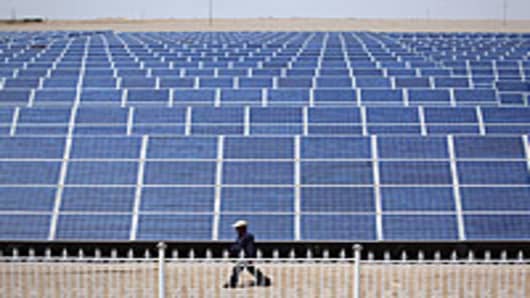LDK Solar lowered the top end of its previous fourth-quarter sales forecast, citing lower-than-expected shipments of solar wafers, cells, and modules.
For the quarter ended Dec. 31, the Chinese solar panel maker said Monday that it now expects revenue for the quarter to total between $440 million and $450 million, down from its previously projected range of $440 million to $520 million.
Despite the cut, the range was still better than Wall Street expected.
Analysts, on average, expect $434.6 million in sales for the quarter, according to a FactSet poll. Still, shares nearly percent.
LDK said it now expects fourth-quarter wafer shipments to total between 215 megawatts and 220 megawatts, while shipments of cells and module shipments are expected to total between 250 megawatts and 260 megawatts.
Meanwhile, in-house polysilicon production is expected to total between 2,100 metric tons and 2,300 metric tons and in-house cell production should come in at between 130 megawatts and 150 megawatts, the company said.
LDK previously projected wafer shipments of between 200 megawatts and 270 megawatts, module shipments of between 180 megawatts and 270 megawatts, in-house polysilicon production of between 2,200 metric tons and 2,800 metric tons, and in-house cell production of between 220 megawatts and 250 megawatts.
The company also said that as a result of the rapid drop in wafer and module prices during the quarter, it expects to incur a write-down of inventories and realize impairment charges, which will result in a negative gross margin for the period.
For the full fiscal year 2012, LDK said it expects its revenue to total between $2 billion and $2.7 billion, while analysts polled by FactSet expect $1.84 billion.
The company also projected fiscal year polysilicon production of between 12,000 metric tons and 15,000 metric tons, wafer production of between 2.7 gigawatts and 3.3 gigawatts, in-house cell production of between 1.2 gigawatts and 1.6 gigawatts, and module production of between 1.2 gigawatts and 1.6 gigawatts.


